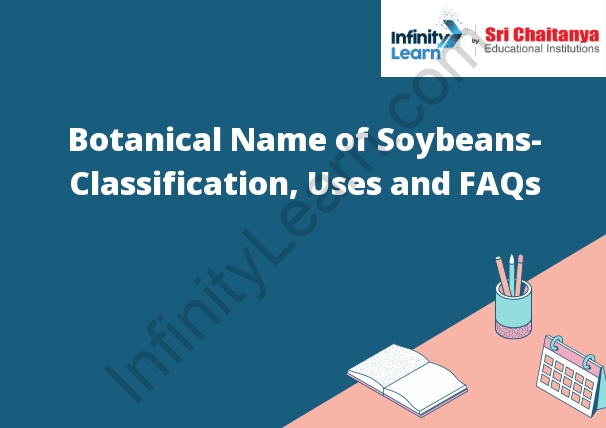Table of Contents
Soybean Botanical Name:
Glycine max
Glycine max, commonly known as soybean, is a species of legume native to East Asia. It is an annual plant that grows to a height of 1.5 to 2 metres. The leaves are pinnate, with 9-19 leaflets. The flowers are small, yellow, and borne in racemes. The fruit is a hairy pod, containing 4-8 seeds.

Scientific Classification of Soybeans:
The soybean plant is a legume that is grown for its edible seeds. The plant is an annual that typically reaches heights of about 2 to 3 feet. The soybean plant has trifoliate leaves and small white flowers. The flowers are followed by pods that contain the seeds. The seeds are typically about 1 inch in length and are kidney-shaped. The seeds are a nutritionally dense food and are a good source of protein, fiber, and vitamins and minerals.
The soybean plant has been domesticated for thousands of years and is now grown all over the world. The plant is used for a variety of purposes, including as a food crop, as a feed crop for livestock, and as a source of biodiesel fuel.
The soybean plant is classified in the family Leguminosae. The Leguminosae is a large family of plants that includes a variety of other legume crops, such as beans, peas, and lentils. The soybean plant is divided into two main subspecies, Glycine max and Glycine soja. The Glycine max subspecies is the most common and is the type that is typically grown for human consumption.
Uses of Soybeans:
Soybeans are a versatile legume that has many uses. The beans can be eaten whole as a protein-rich food, or the beans can be processed into many different products. Soybean oil is a popular cooking oil, and soy milk is a popular dairy alternative. Soy protein is a high-quality protein that is used in many different types of food products. Soybeans are also a source of dietary fiber and important vitamins and minerals.
FAQs:
Soybeans are a type of legume that are grown for their edible seeds. They are a major source of protein and oil, and they are also used for livestock feed and in industrial products. Soybeans are a versatile crop, and they can be grown in a variety of climates.
Q: What are the benefits of eating soybeans?
A: Soybeans are a good source of protein, fiber, and healthy fats. They also contain important vitamins and minerals, including iron and zinc. Soybeans have been shown to have a number of health benefits, including reducing the risk of heart disease and cancer.
Q: Are soybeans good for the environment?
A: Soybeans are a sustainable crop that can be grown in a variety of climates. They require little water and are pest-resistant. Soybeans also produce a high yield, making them a more efficient crop than other types of legumes.
Q: What is the difference between organic and conventional soybeans?
A: Organic soybeans are grown without the use of pesticides or herbicides. They are also grown using sustainable farming practices that protect the environment. Conventional soybeans are grown with the use of pesticides and herbicides, which can be harmful to the environment.





